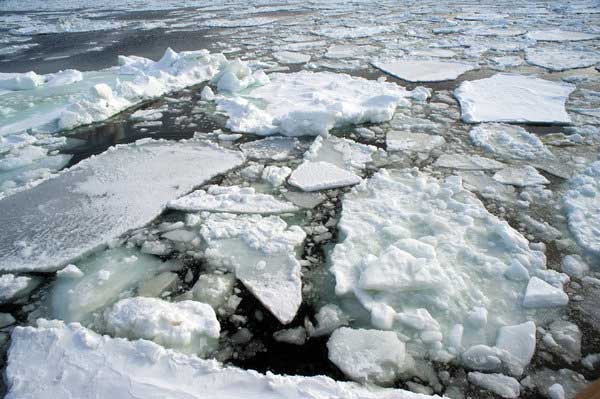The Icebreaker Gap Between Russia and the US is Real, But Here’s Why it May Not Matter as Much as You Think
In March 2021, the massive container ship Ever Given ran aground in the Suez Canal, blocking one of the world’s most vital trade routes for 6 days. This event shone a spotlight on Russia’s Northern Sea Route, an increasingly viable Arctic Ocean trade route between Europe and Asia that takes half the time compared to sailing through the Suez.
To utilize this route, Russia deploys a large fleet of over 55 icebreakers and is building more. Meanwhile, the United States government currently operates just 2 icebreakers. This stark difference has been termed the “icebreaker gap” – but why it exists and whether it truly matters is more nuanced than you might think.

Russia Needs More Icebreakers Due to Geographic and Economic Factors
According to the Arctic Institute, Russia has around 15,000 miles of Arctic coastline and 2 million inhabitants living in the region. Compare this to the United States’ limited 2,500 miles of Alaskan Arctic shoreline and only 68,000 people.
Additionally, oil and natural gas extraction from the Arctic region comprises a sizable portion of the Russian economy. For the US, Arctic drilling makes up a small fraction of total oil and gas production.
With the Northern Sea Route along its northern coast, Russia also sees significant potential for shorter trade routes between Europe and Asia. Hence, Russia has logical reasons for maintaining a large icebreaker fleet that the US does not.
America’s Two Polar Icebreakers Faced Major Issues, Forcing Costly Upgrades
While Russia’s geographic and economic motivations explain their icebreaker expansion, the US fleet remains worryingly small, especially considering the age of its vessels. America’s 2 polar icebreakers, the Polar Star and Polar Sea, reached the end of their 30-year service lives in 2006 and 2008 respectively.
By 2010, the Polar Sea suffered major engine failures requiring millions in repairs. From 2012-2013, the US had to hire Russian icebreakers to assist in annual missions to Antarctica when both vessels were out of commission.
Rather than spend $900 million on a new ship, $57 million was allocated to extend the Polar Star’s service life by 10 years until new icebreakers could be built. However, construction on the first of these new ships has now been pushed back to 2027 due to delays.
With Polar Star now the US’ only functioning heavy icebreaker, operation and maintenance costs continue ballooning. Though it received a $76.2 million overhaul, extra precautions are required to keep it running during annual Antarctica supply missions.
America’s Largest Icebreaker Still Doesn’t Match Russia’s Heavy Fleet
Though America’s Healy icebreaker is physically larger than the Polar Star, it is classified as just a medium icebreaker. Healy focuses on hosting scientific expeditions versus the heavy icebreaking duties required to keep Antarctica supply lines open.
Healy can only break 4.5 feet of ice continuously, unlike the Polar Star which can continuously crush 6 feet of ice ahead and ram through up to 21 feet. Healy does not provide the robust icebreaking capability that a heavy polar icebreaker like Russia’s fleet provides.
Private Icebreaker and Retrofitting Old Ship Among Current Options
Facing more delays in new polar icebreaker construction, the US Coast Guard has two less-than-ideal options to expand its fleet:
Purchase the privately owned Aiviq, the world’s largest civilian icebreaker, for $150 million. However, the ship would require extensive upgrades to meet military standards. Plus, its light icebreaking abilities may still fall short of Coast Guard requirements.
Refurbish the decommissioned Polar Sea for approximately $250 million. This would require cutting open the hull to entirely replace the ship’s ruined engines – a difficult but not impossible task.
Manning Any New Ships Also Poses Major Challenges
Even if the Coast Guard rapidly expanded its icebreaker fleet, crewing these ships with qualified personnel remains an uphill battle. In 2020, $40,000 bonuses failed to attract applicants to fill officer positions. Requirements have since been lowered due to lack of interest.
Shortage of trained officers could result in brand new ships stuck idle in port. Maintenance and operation budgets mean little if no one is available to sail the vessels.
Conclusion: The Icebreaker Gap is Real but Not Necessarily Critical
Russia intends to dominate the strategically and economically important Northern Sea Route. Hence its large and growing icebreaker fleet designed to project power and protect sovereignty.
However, the U.S. does not necessarily require matching numbers to defend American interests in the Arctic. Additional icebreakers would benefit Coast Guard missions, but lack of personnel may be a more pressing issue than lack of hulls.
Though the icebreaker gap is real, Russia’s numerical advantage may not directly weaken America’s defenses or scientific efforts in the polar regions. Both sufficient icebreaking ships and properly trained crews are required to meaningfully strengthen the United States’ Arctic capabilities.
